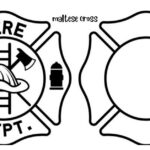list crowlers are essential tools for navigating the vast internet landscape, allowing for the systematic collection of data from various web sources. From businesses to researchers, these automated scripts have revolutionized the way data is gathered, structured, and utilized across industries. In this article, we will explore the intricacies of list crawlers, how they work, their benefits, and how they can be applied effectively. We’ll also look at potential challenges and ethical considerations surrounding their usage.
What Are List Crawlers?
How Do List Crawlers Work?
list crowlers start by accessing a web page through its URL, reading the HTML code, and identifying the information that matches the crawler’s programmed criteria. Once it identifies the relevant data, the crawler extracts it and stores it in a structured format, such as a spreadsheet or database. The crawler then moves on to the next URL, continuing this process until it has covered all the designated web pages or domains.
Crawlers operate through a set of algorithms that define what content to collect and how to navigate through the website. For example, a list crawler tasked with collecting product information from an e-commerce site will be programmed to identify product names, prices, descriptions, and other relevant details.
Applications of List Crawlers in Various Industries
list crowlers have numerous applications across industries, making them indispensable for data-driven decision-making. In the e-commerce sector, for example, businesses use list crowlers to monitor competitors’ pricing, product availability, and customer reviews. Similarly, marketing professionals deploy crawlers to track mentions of their brands across social media platforms and blogs, helping them stay on top of public sentiment.
In the academic and research sectors, list crawlers assist in collecting vast amounts of literature and data for analysis. Researchers can use crawlers to gather relevant academic papers, case studies, and even raw data from online databases. These capabilities are especially important in fields such as data science, artificial intelligence, and market research, where large volumes of data are required to develop models and insights.
Why List Crawlers Are Important for Businesses
For businesses, list crawlers provide a competitive edge by delivering real-time data that can inform strategic decisions. They allow companies to automate the process of collecting and analyzing competitor information, market trends, and customer feedback. Instead of manually browsing multiple websites and collecting data, list crawlers can perform these tasks much faster, freeing up human resources for more strategic activities.
In addition to market intelligence, list crawlers help in improving internal processes, such as product development and customer service. For instance, companies can use crawlers to monitor customer reviews and feedback across multiple platforms, identifying common issues or areas for improvement in their products.
How List Crawlers Help in SEO
Search engine optimization (SEO) is another area where list crawlers play a crucial role. SEO professionals often use web crawlers to audit their websites, ensuring all pages are properly indexed and optimized for search engines like Google. Crawlers can identify broken links, missing metadata, and other issues that may negatively impact a website’s search ranking.
Moreover, crawlers can be used to monitor competitors’ SEO strategies, collecting data on their keyword usage, backlink profiles, and content structure. This information is invaluable for refining SEO tactics and staying ahead of the competition.
Challenges of Using List Crawlers
While list crawlers are powerful tools, they are not without their challenges. One of the primary issues is maintaining accuracy in the collected data. Websites frequently update their structures, which may render a crawler’s algorithm outdated. When this happens, crawlers may fail to collect data or collect incorrect information. Regular updates to the crawler’s programming are necessary to ensure continued accuracy.
Another challenge is managing the vast amounts of data crawlers collect. While crawlers can collect data quickly, organizing and analyzing that data can be overwhelming without proper systems in place. Companies need robust data management systems to handle and make sense of the data extracted by crawlers.
Legal and Ethical Considerations
The use of list crawlers raises several legal and ethical considerations, particularly regarding privacy and intellectual property. Some websites explicitly forbid crawling in their terms of service, and violating these terms can lead to legal repercussions. Additionally, collecting personal data from websites without permission can breach privacy regulations, such as the General Data Protection Regulation (GDPR) in Europe.
Ethically, companies need to consider whether their use of crawlers is responsible and respectful of other web users. Overloading a website’s servers with crawler traffic can cause performance issues or even result in the website going offline. Responsible use of crawlers involves setting appropriate crawling speeds and respecting the rules laid out in a website’s robots.txt file, which specifies which parts of the site can and cannot be crawled.
Optimizing the Use of List Crawlers
To make the most of list crawlers, it is essential to optimize their operation. This involves setting clear objectives for what data needs to be collected and ensuring the crawler’s algorithm is fine-tuned to meet those goals. Regularly updating the crawler to adapt to changes in website structures is also crucial to maintain data accuracy.
Additionally, companies should invest in robust data management systems to organize and analyze the collected data effectively. This might include integrating the crawler with other software, such as customer relationship management (CRM) systems or business intelligence tools, to turn raw data into actionable insights.
Choosing the Right List Crawler Software
There are numerous list crawler tools available, each offering different features and capabilities. When choosing a list crawler, businesses need to consider factors such as ease of use, scalability, and compatibility with the websites they need to crawl. Some popular list crawler tools include Scrapy, Octoparse, and ParseHub. These tools vary in terms of complexity, with some being more suited to advanced users who need highly customizable crawling solutions.
Future Trends in List Crawlers
As artificial intelligence (AI) and machine learning continue to advance, we can expect list crawlers to become even more powerful and efficient. AI-driven crawlers will likely be able to better interpret complex data, such as images and videos, which are currently more challenging for traditional crawlers to process. Additionally, advancements in natural language processing will enable crawlers to understand and extract more nuanced information from text.
In the future, we may also see the development of ethical crawling frameworks that ensure crawlers operate responsibly and within legal boundaries. This will be especially important as web data collection becomes even more widespread across industries.
Conclusion
List crawlers are indispensable tools in today’s data-driven world, offering businesses, researchers, and SEO professionals a fast and efficient way to gather critical information. By understanding how they work and the best practices for using them, companies can leverage list crawlers to gain valuable insights, improve processes, and stay ahead in competitive markets. However, it is important to be mindful of the challenges and ethical considerations involved in using these powerful tools.
FAQs
What is a list crawler?
A list crawler is a software bot that automatically browses websites to collect and organize data from web pages.
How can list crawlers help businesses?
List crawlers allow businesses to gather competitive intelligence, monitor market trends, and improve customer service by collecting data faster.
Are there any legal concerns with using list crawlers?
Yes, using list crawlers without permission or in violation of a website’s terms of service can lead to legal issues.
Can list crawlers be used for SEO?
Yes, SEO professionals use crawlers to audit websites, monitor competitors’ SEO strategies.
What are the best tools for list crawling?
Some popular list crawling tools include Scrapy, Octoparse, and ParseHub, each offering different features based on user needs.











